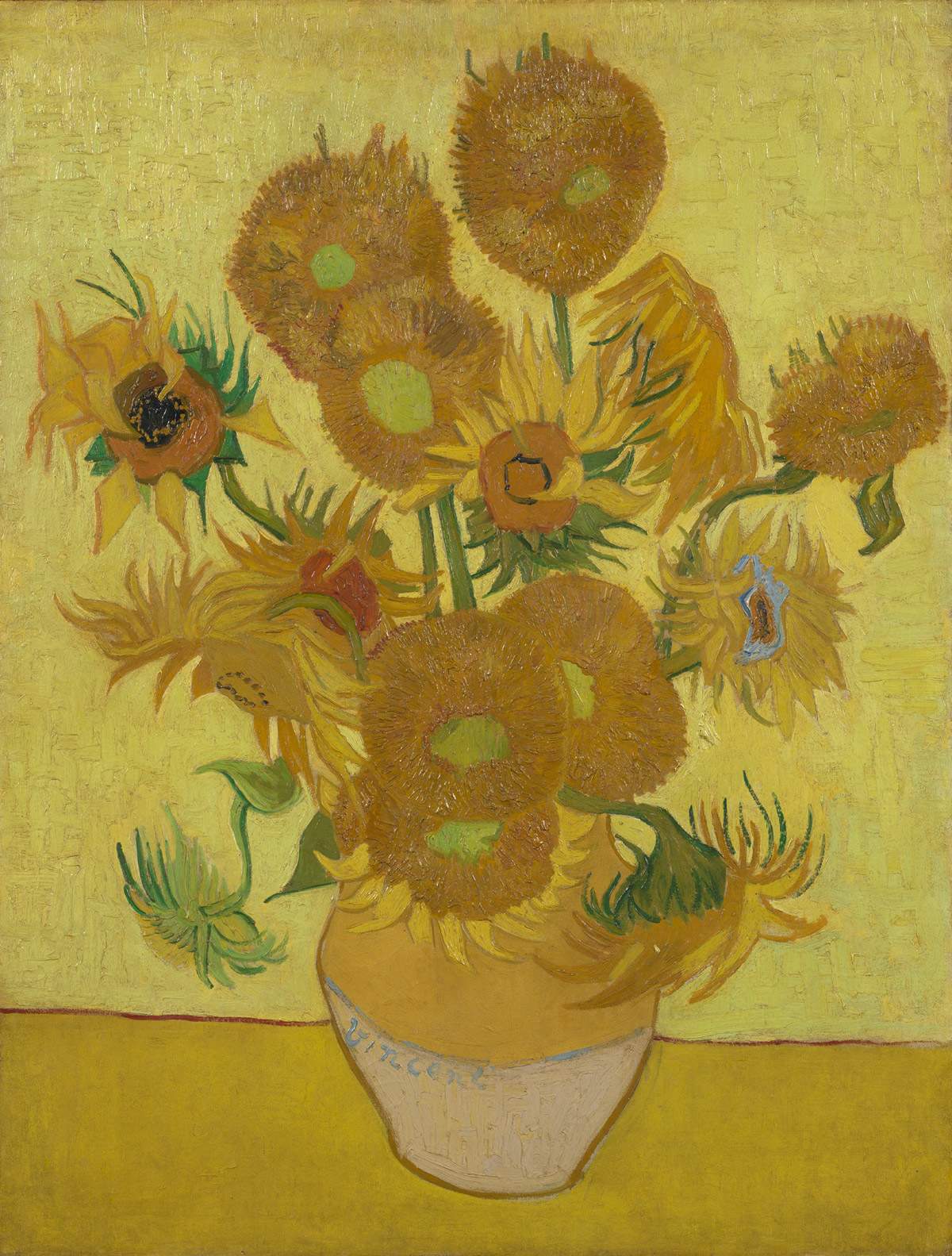New investigations for Vincent van Gogh ’s Sunflowers (Zundert, 1853 - Auvers-sur-Oise, 1890). The Van Gogh Museum in Amsterdam has subjected the Dutch painter’s masterpiece to a new campaign of studies, the results of which are presented in an exhibition titled Van Gogh and the Sunflowers, running at the institution from June 21 to Sept. 1, 2019, which in addition to this also delves into the circumstances during which van Gogh painted the work, as well as the significance of the Sunflowers for the great artist. Van Gogh first chose sunflowers as the subject of one of his paintings in Paris: we find them in both landscapes and still lifes. After his move to Arles, we find sunflowers painted in vases (those pertaining to this type are the most famous paintings featuring the beautiful flowers). The version found in the Van Gogh Museum in Amsterdam was painted for Paul Gauguin (Paris, 1848 - Hiva Oa, 1903), who for a couple of months in 1888 lived in Arles with van Gogh, portraying him painting sunflowers. And van Gogh himself considered the Sunflowers to be among the high points of his production. And just after making them he was aware that he had achieved something extraordinary-we know this from his writings.
Recent studies have shown again that Sunflowers is a very fragile painting, but the health condition of the work is “stable.” The campaign was conducted by a team of specialists from the Universities of Antwerp, Perugia (so there is also a bit of Italy in the research) and Torún, who worked together with experts from the Netherlands Cultural Heritage Agency, led by Ella Hendriks, professor of conservation and restoration of cultural property at the University of Amsterdam. The Sunflowers were examined mainly in terms of materials, and the interesting fact is that the analyses were conducted without the need to transport the work, thanks to new special technologies. A lot of information was gathered about the support, the painting, and previous restorations: the goal was to find out precisely what materials van Gogh had used, what condition the work is in, and whether restoration will be necessary.
It turned out that both the imprimitura and the color layers of the Amsterdam Sunflowers are extremely sensitive to vibrations and changes in humidity and temperature. Therefore, it is necessary that the work be moved as little as possible and remain exposed to stable climatic conditions. For this reason, the museum recently decided that the Sunflowers will never travel again in the future.
The colors van Gogh used are undergoing a natural aging process, which has resulted in the partial loss of their original hues due to the effects of discoloration. In particular, we know that these changes were caused by the fading of a particular type of red that van Gogh used, geranium lacquer (which fades over time), and others have occurred due to the darkening of chrome yellow, whose hues become darker with the passage of time. And again, information was obtained about past restorations conducted on the work: for example, it was determined that the work’s appearance was also altered by the layers of varnish applied during past interventions. The problem is that these varnishes cannot be removed, due to the fact that varnishes and colors in many places in the painting have amalgamated. And the retouches made during the restorations have also faded: it has not been possible to remove many of them because they are under the varnishes added later, so the only reason to heal these damages would be to intervene with new retouches.
The exhibition will display twenty-three works, all from the Van Gogh Museum’s collection. For the first time, the back of Sunflowers will be shown to the public: thus, it will also be possible to see how van Gogh intervened on the support. In particular, the painter later added a strip of wood to the top of the frame, attaching it with nails: he probably realized that the sunflowers were too close to the top edge and wanted to give more space. The exhibition also resulted in a new publication, titled Van Gogh’s Sunflowers Illuminated: Art Meets Science and published by Amsterdam University Press, in which an international group of scholars, restorers and art historians reveal the results of years of research on the Sunflowers at the Amsterdam Museum and the National Gallery in London. “We are pleased with the collaboration with Ella Hendriks and are proud of this publication, which makes a contribution to research on van Gogh and to our knowledge of 19th-century materials,” said Marije Vellekoop, head of collections and research at the Van Gogh Museum. “The book demonstrates how much knowledge can be gained when different research techniques are employed and professionals from different fields are brought into the field.”
Pictured: Vincent van Gogh, Sunflowers (January 1889; oil on canvas, 95 x 73 cm; Amsterdam, Van Gogh Museum)
 |
| New studies on van Gogh's Sunflowers (and there's a bit of Italy, too): they are a most fragile work |
Warning: the translation into English of the original Italian article was created using automatic tools. We undertake to review all articles, but we do not guarantee the total absence of inaccuracies in the translation due to the program. You can find the original by clicking on the ITA button. If you find any mistake,please contact us.